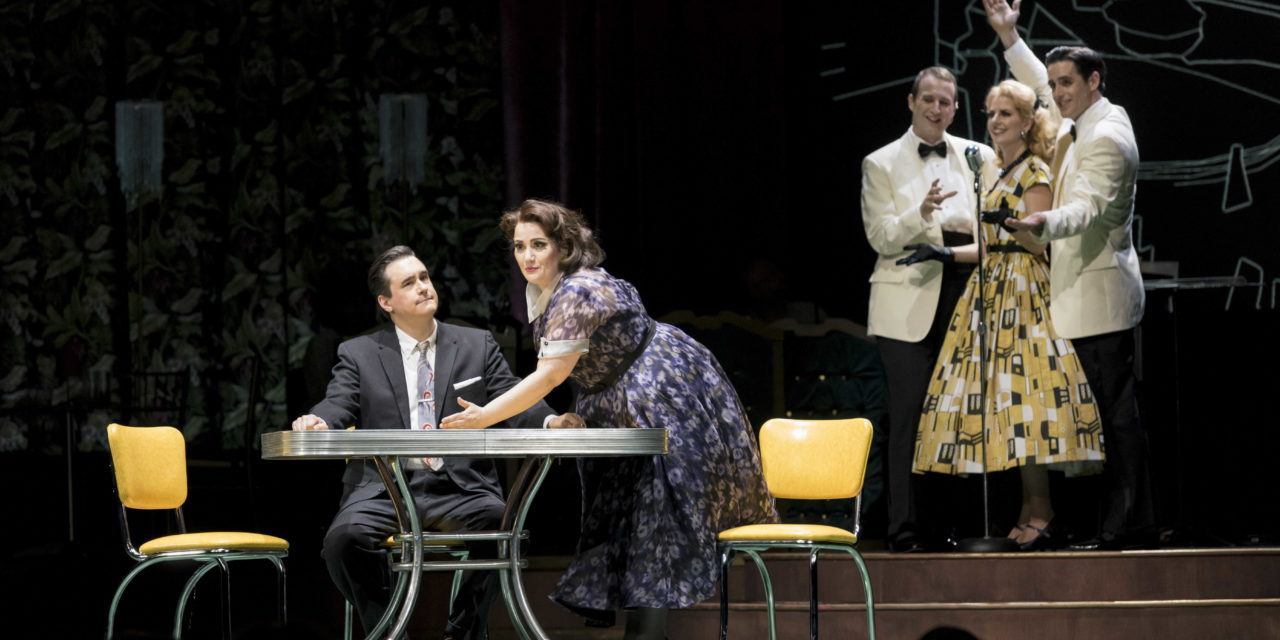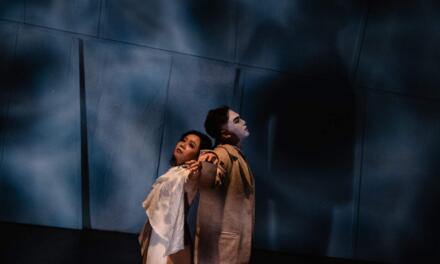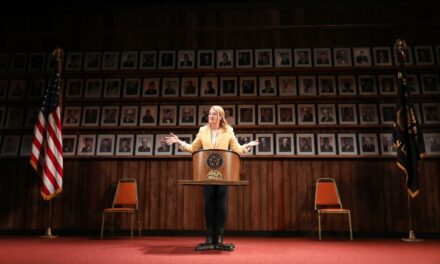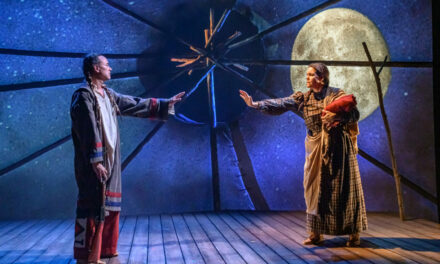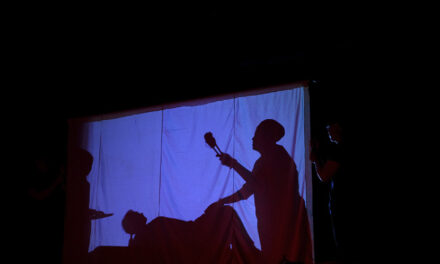Boston Lyric Opera truly transformed the North End’s DCR Steriti Ice Rink into a 1950s Cuban style nightclub for their matinee of Trouble In Tahiti and Arias And Barcarolles on Sunday, May 27th. The transformation, by Stage Designer Paul Tate Depoo III, was visually spectacular and delightfully disorienting. It was easy to forget that just a few weeks prior, hockey was being played on the now pink-carpeted floor. Attendees walked through a refreshment lounge separated by large drop curtains to get to the more open space first, a clever device to set the mood. Once inside the theatre space, enormous crystal mid-century chandeliers highlighted lush emerald tropical prints on the walls, gold chairs and tables on the floor for audience members (in this case nightclub guests), and a classic bandstand featured instrumentalists in white tuxedos. This all created a vibrant, retro feel. Onstage costumes designed by Nancy Leary were strikingly as colorful as an MGM musical and many audience members followed suit with period costumes.
Leonard Bernstein, a Massachusetts native, has been featured much this season throughout the state for his centennial celebration. His one-act opera, Trouble In Tahiti, first premiered in 1952 and pierces its own era with a cutting irony. With two central characters, married couple Sam and Dinah, it also features a Greek chorus-inspired trio of singers with often ironic commentary in the style of a radio broadcast from the era. Arias And Barcarolles is a song cycle for mezzo and baritone, written much later in the composer’s career in 1988. These pieces were presented back to back with no intermission for an approximately 90-minute program. The two blend well together, expounding on similar thematic material that the composer continually revisited throughout his life–the sparkly appearance of suburban materialism versus its oppression, the nature of love, and the circling effect of time on a marriage.
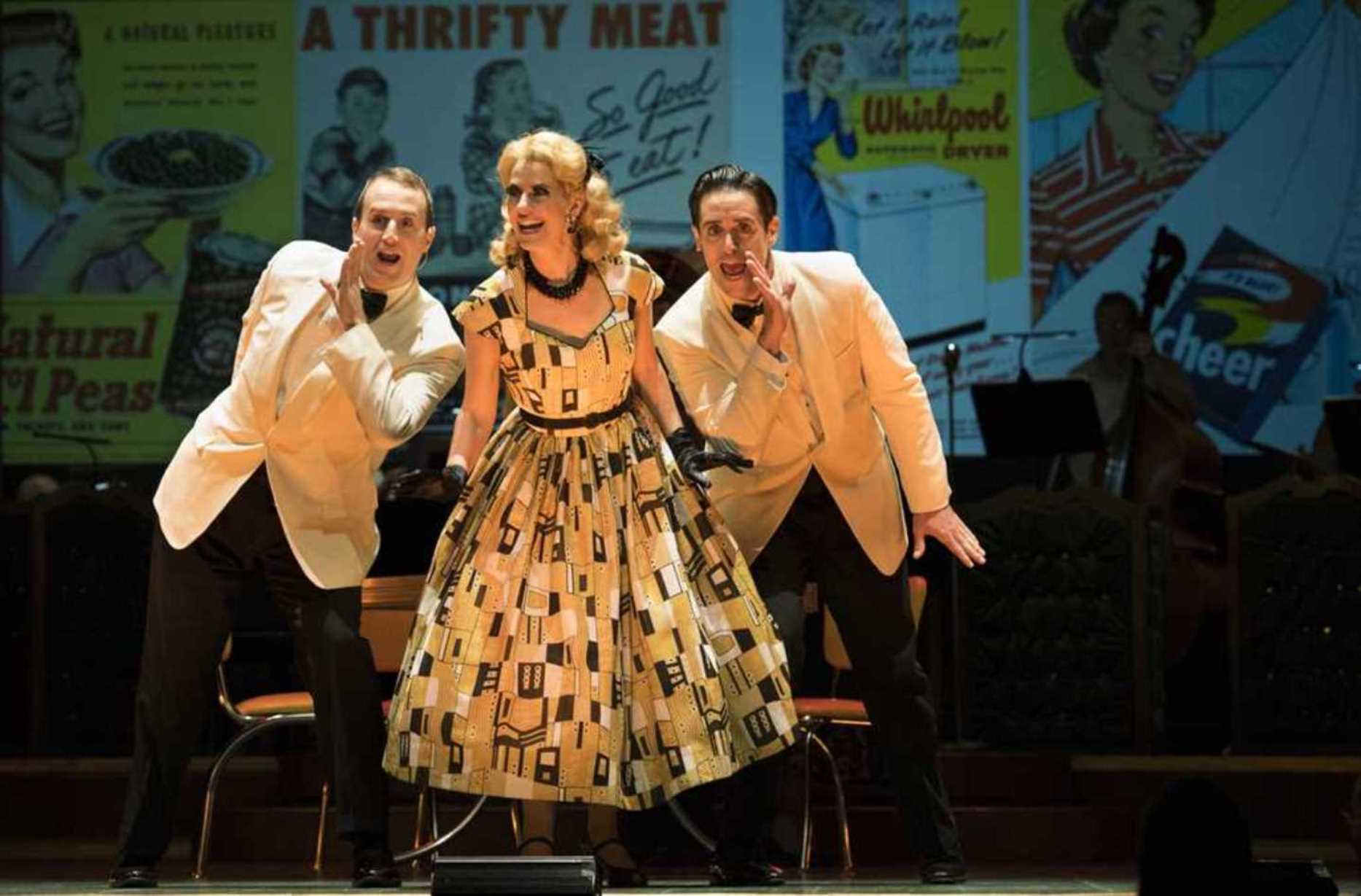
Photo Credit: Liza Voll.
In BLO’s production, Stage Director David Schweizer and Movement Director Melinda Sullivan interwove the action in every scene so that normally imaginary characters were interacting with Sam and Dinah as mute counterparts. All the physicality was impeccably period appropriate without an anachronism in sight, including Sam unbuttoning his jacket before taking a seat and especially the gestural language of the Trio. Sam and Dinah outwardly project a happy, perfect suburban home life (with Trio members greeting the audience from towns like Brookline) but they each struggle with how they arrived at this point of disconnection in their marriage. Bernstein’s libretto and the direction in this particular production highlight that their questions are different. Dinah, as the 1950s housewife, is searching to be free and for A Quiet Place (also the title of Bernstein’s follow-up opera utilizing the same family). Sam, despite his machismo at the office and gym, expresses a need to help her be free and to help himself feel love for her again. Arias And Barcarolles is more varied and disparate (even including a klezmer-inspired Yiddish wedding fantasy) but uses the trio in a similar function, adding cohesion to the piece overall. The singing actors all handled the transitions beautifully as well.
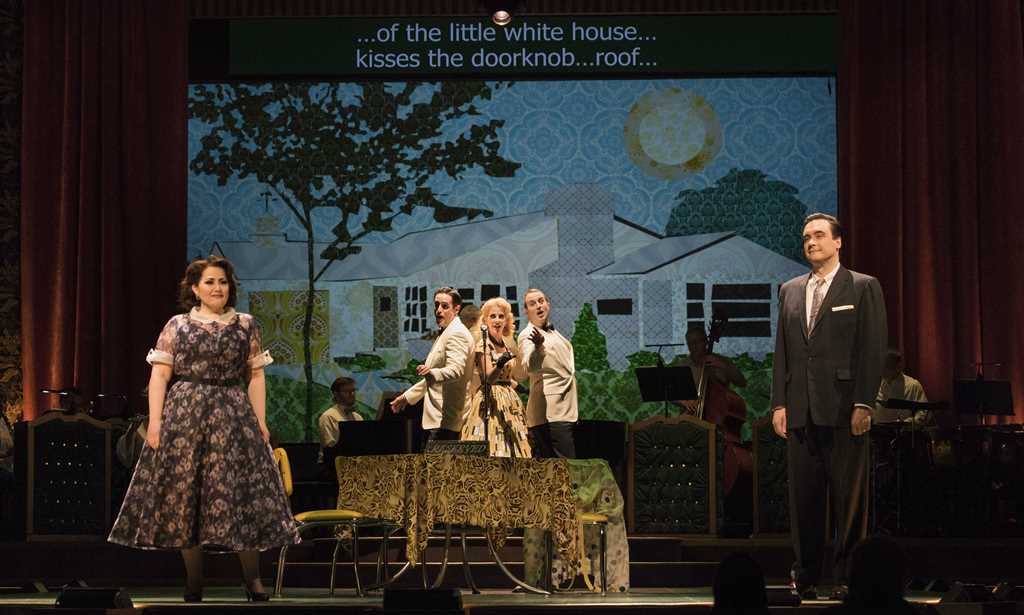
Photo by Liza Voll.
Heather Johnson possesses a lovely vocal quality overall with a hugely resonant chest voice. Her aria, What A Movie, in which Dinah condemns and then celebrates the trashy B movie she just saw, was engaging and entertaining. More explosive diction was needed in the middle register, however, for the emotional and text-painting punch, as well as the space demands. Overall, the rink space wasn’t as friendly to the female voice. But then again, Bernstein’s fascination with the jazz idiom also doesn’t have them soaring through the stratosphere vocally either. Marcus DeLoach is a model of excellent vocal technique, which may only thrill singers in the audience, but the tenoral ring to his top and robust character throughout his sound should thrill others, as well. In Sam’s aria, he captured a 1950s male bravado perfectly.
Trio members Mara Bonde, Neal Ferreira, and Vincent Turregano, were appropriately bubbly and executed an exhaustive amount of movement throughout the entire show. They weaved deftly in and out of scene after scene with vocal agility and harmonious blend. The orchestra, led by David Angus, was excellent, and kudos to pianist Brett Hodgdon, who not only played throughout the entire program but also beautifully played nearly an hour of music when the house opened, all under hot stage lights in an already warm theater space.
Clearly, BLO’s many years of opera annex productions have prepared them for creative uses of space in the wake of the company’s recent nomadic history. They are still looking for a theatre space in the city to call home. Having had spotty successes with revamped classics, BLO tends to do well with newer pieces and this was no exception. The visual splendor of Tahiti, combined with its thoughtful direction, should get their audience excited for the more contemporary offerings upcoming.
This post was written by the author in their personal capacity.The opinions expressed in this article are the author’s own and do not reflect the view of The Theatre Times, their staff or collaborators.
This post was written by Katrina Holden-Buckley.
The views expressed here belong to the author and do not necessarily reflect our views and opinions.

